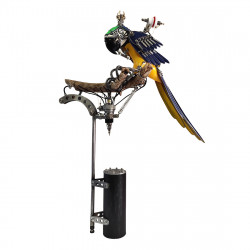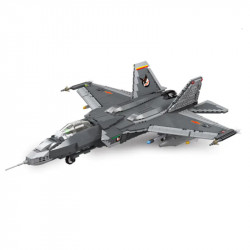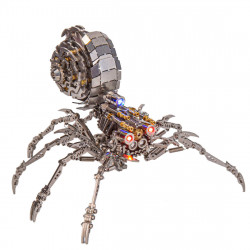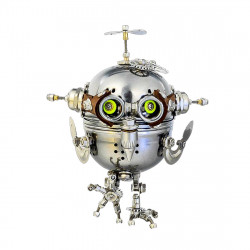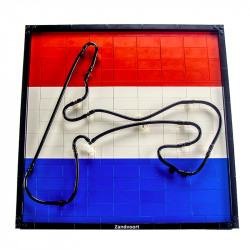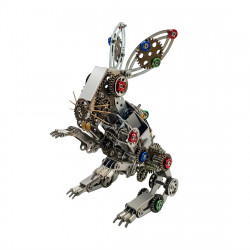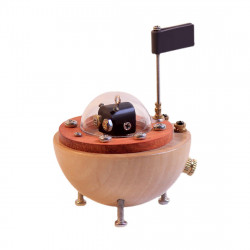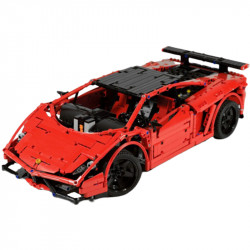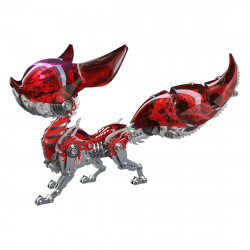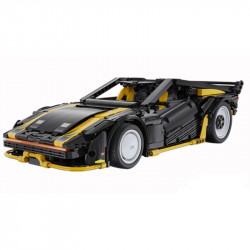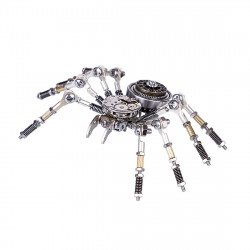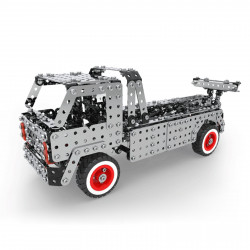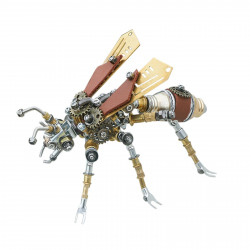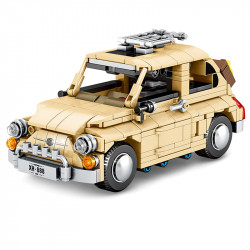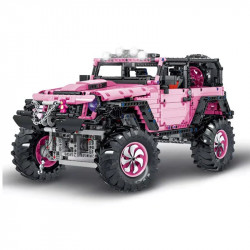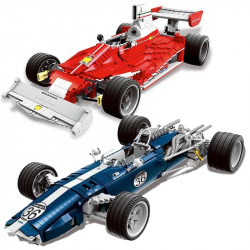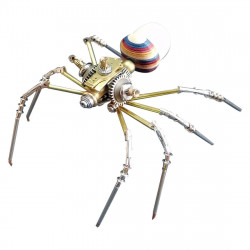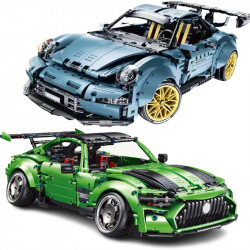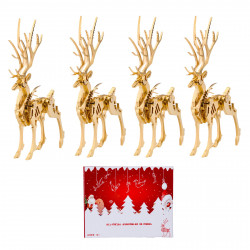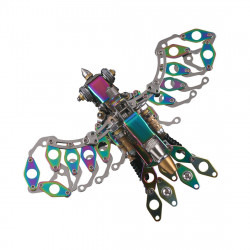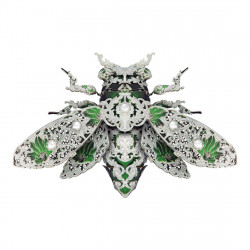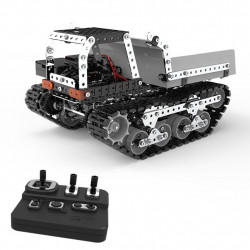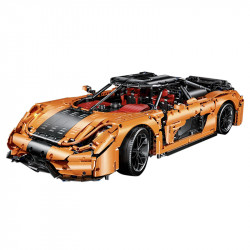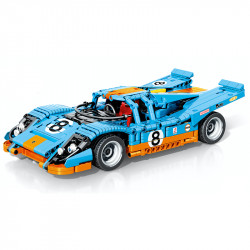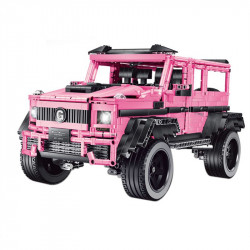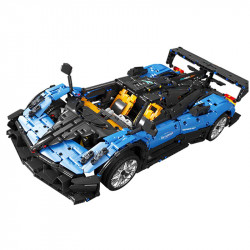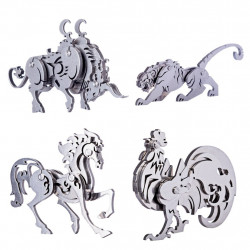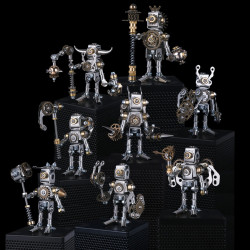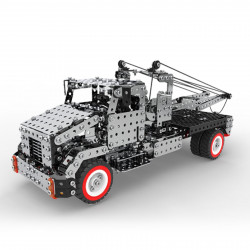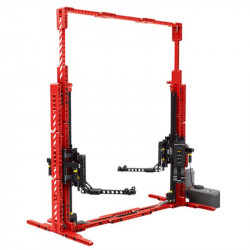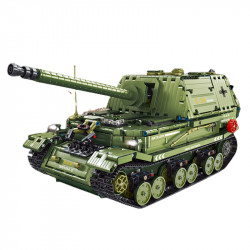How to Build a Borg Cube Model

How to Build a Borg Cube Model
I was inspired many moons ago by another builder who used their leftover blank sheets to construct a structure or something. What they had done sparked a portion of my brain that had earlier thought it would be awesome if Metal3dpuzzles created a Borg Cube model (layered, not just a box, of course). All of this took place during a Metal3dpuzzles mod contest on Instagram, which I ultimately won with my Borg Cube entry.
In the end, I made another one and sent it to Fascinations as a token of appreciation for their generosity and awesomeness (yes, I am a complete nerd). I wanted it to be a surprise, so I kept the fact that I mailed it a secret. Funny enough, I ended up calling them to make sure it got there, and it turned out that sending a package to a business without warning was a bad idea. It was funny even though they hadn't opened it due to safety concerns, which was logical in retrospect. However, shortly after I posted about finally getting the original build into the office, a fellow builder commented and asked if I had created a lesson on how to do it.
If I had been writing this blog at the time, I would have, but I wasn't. She is, like the majority of people in this community, a fantastic person, so I went ahead and composed one to give to her. Another builder tagged me in a recent post on the Metal3dpuzzles Models Facebook page on how simple and humorous a Borg Cube model would be, stating that I had constructed one myself. I was also reminded that I had already written that tutorial. I discovered it after looking through my old belongings! Since I haven't been able to create for about a month due to work and personal issues, it is a nice thing to post here.
Isn't that enough backstory? Now, let's begin the lesson! However, I do want to add one more detail. I don't currently have any images or visuals for this procedure. I'm transferring this over precisely as it is from the email I gave to my colleague builder, but if I have time later, I might go back and add some. Hopefully, I can keep the formatting. With the exception of a few specifics I've added in italics, everything that follows is my original "tutorial," as published many moons ago.
I'll put this together as a set of stages and attempt to explain what I did. I wish to include pictures with it, but right now, I don't have enough extra sheets to create another one. I'll also share some of the things I did to make the second one that I sent to Fascinations better. I only finished building three of the cube's sides, which may not have been evident from the picture. To reflect the light out of the "front" side, the back sides are just three sheets that have been connected at the edge and covered with foil.
Build Supplies
- Cardboard Box
- Wax Paper
- Elmer's or school glue, or white glue
- 30 leftover sheets (but this need not be a multiple of 3)
- Superglue (Gorilla Glue) with brush applicator
- Foil
- Duct Tape
- LED fairy lights (green, battery-powered, and available on eBay for a reasonable price; slow shipping from China) ped from China)
- Silver and Black Acrylic Craft Paint
- Unreliable Paintbrush You Don't Give a Crap
- A well-ventilated workspace
Build Process
- Make the build support frame a straightforward, disposable cardboard jig that helps ensure everything is positioned correctly. When I originally constructed a Borg cube, I just used an empty box, but trust me, that wasn't the best option because it was difficult to reach into at all the appropriate angles and concentrate the vapors of super glue.
- Cut the corner off a cardboard box to create half a cube with three square sides that meet in one corner. To facilitate sheet alignment, the cube should be roughly half an inch smaller than one of the sheets.
- Cut out some wax paper squares that will fit inside the cardboard frame's three sides. Apply white glue to them and allow them to dry. Although some of the superglue that follows may stick to the wax paper, removing the wax paper is much simpler than removing the cardboard.
- Position two sheets against each other on two sides inside the building frame. After aligning them along the adjacent edge, apply a tiny amount of superglue to the crack where the sheets meet. Keep the sheets in place until they are sufficiently cured to support themselves.
- Align the edge of the third sheet with one of the two already there and place it on the other side of the frame. Apply glue to the edge and leave it there until it cures. Align the remaining edge, apply adhesive, and wait for it to set. This creates a kind of ragged "half-cube" out of the cube's three faces.
- Since the three-sheet half-cube made in steps two and three will be utilized later as a non-visible component of the build, remove it and set it aside. Then, repeat steps two and three to produce another half-cube.
- Apply a thin layer of superglue to multiple locations around one of the sides' four outside corners, leaving the half-cube in place. Distribute a few drips at random around the middle of the sheet. After that, carefully press and hold in place another layer until it has dried enough to maintain its position by itself. Repeat with the other two sides. Selecting sheets that don't closely resemble the layout of the sheet you are attaching to will yield the most outstanding results.
- Continue step 5 until all 24 sheets (or whichever many you have left) have been used. To avoid leaving big spaces between the stacked layers, try to distribute and rotate the sheets evenly. In the end, you should have one half-cube with sides that are nine layers thick and another that is only one sheet thick (or something else if you started with a different number of sheets, but one "half-cube" will be just one sheet thick).
- Try applying a wet layer of silver paint to the exterior of the multi-layer half-cube one side at a time. It will begin to bead up and not cover evenly but don't worry about that. Don't let the paint dry; instead, paint all exposed areas of the nine layers.
- Once you have completed the third side of the cube, proceed to paint the remaining sides in the same sequence using black paint. As you go, the wet paints will combine and swirl with the silver (mainly if you apply them in a stabbing motion) to produce a mottled surface that gives the appearance of more surface complexity. Let it dry.
- Cut out three foil squares that are around an inch more significant than a metal sheet on each side. Using super glue, adhere these sheets to the inside of the one-layer thick cube, leaving the excess hanging out. In addition to reflecting more light out the front of the model, the foil lessens light seeping out the back.
- Fold the excess foil over to the outside, then tape it down with duck tape. Seal the edges where the sheets meet by placing duck tape around the outside, but leave a small space in the inside corner.
- In the foiled half-cube, push the end of the reasonably light string (not the one with the battery pack) through the corner and pull through until you get to the thick plastic-wrapped portion of the wire. After securing this using duct tape, seal the corner.
- Place one side of the cube flat on a surface. Bundle or coil the fairy lights, placing them "inside" the foiled half of the cube. Place the painted half-cube on top of the foiled half and balance it (or glue it in place).
Alright, so I edited more than I had anticipated, but The first time, I didn't write the instructions very well. However, you are welcome to follow the directions strictly or use them as a model for your variation. If you were truly committed, you could create a complete six-sided cube.
The tutorial I prepared on building the second Borg cube is different from the pictures of my first build. Nevertheless, you get to witness the cube's incomplete side being revealed!
In addition, a humorous follow-up to the amusing tale of the Borg cube I sent to Fascinations. That was long before I established my blog, got in touch with someone else at Fascinations, and eventually received some models to evaluate on the blog. I assumed they were aware that I was the same person, but it seems they weren't. My contact said, "That was you!??!" (or something similar) when I brought it up once, and then went on to tell me a little more about the story from their perspective. That's how funny life is.
